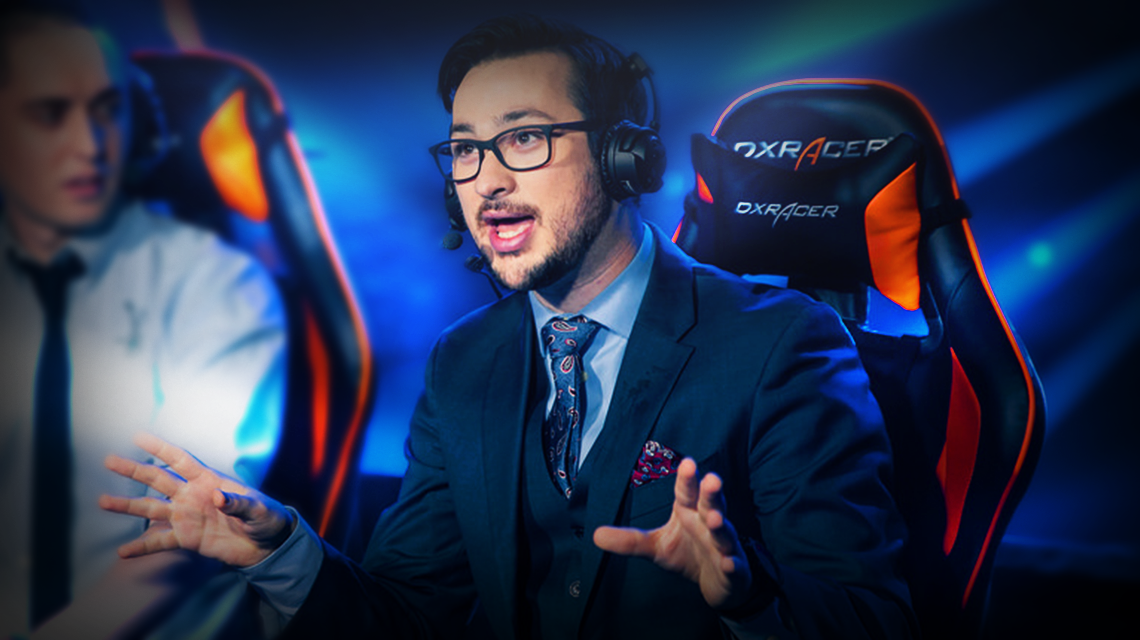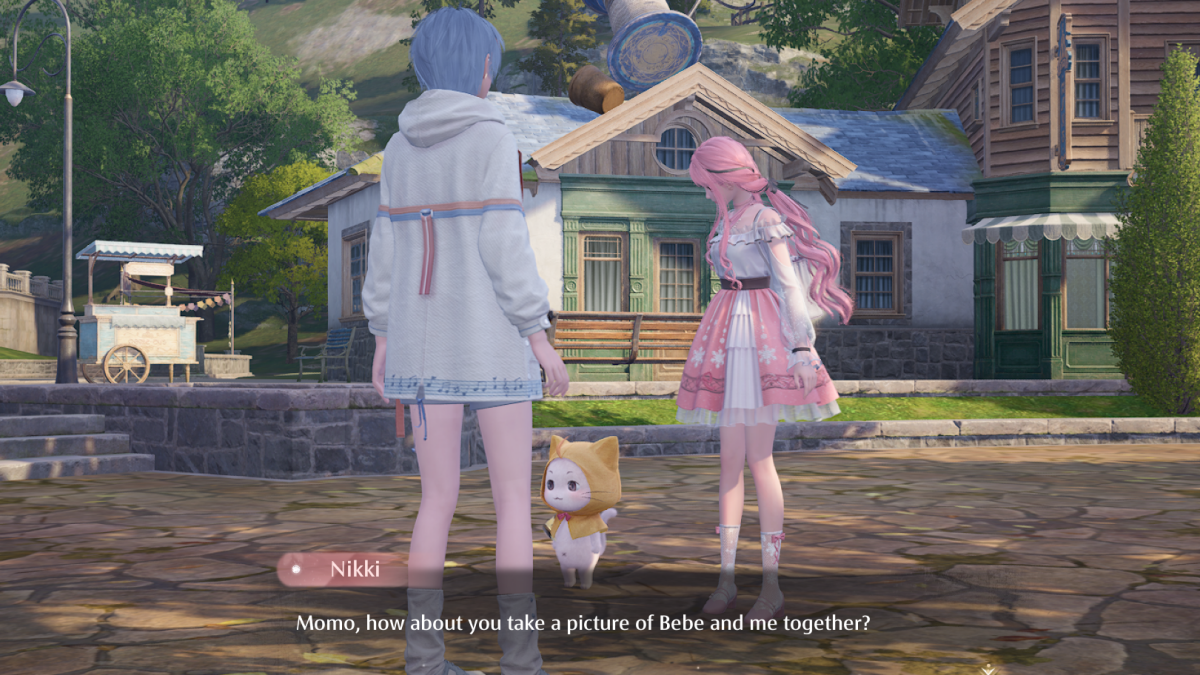Cam Brierley: So we’ll start off with yours and Henry’s podcast. You’re in the process of doing Drop The Bomb Season 2, if I’m right?
Matthew “Sadokist” Trivett: “Yeah, we’re in the planning phases right now. So, the hard part is we’re transitioning away from some of our former sponsors that didn’t really, we think, offer as much as we wanted or we didn’t feel that they were complimenting us on our work-style of being back-and-forth all the time and creating interesting content for people. Then we also had to schedule it, which is super hard with [our schedules] in general. So, right now, it’s all about figuring out when we get slotted in. We’re planning on starting mid-March; we don’t have a specific date yet, but right around 17-19, somewhere in there. Then we’re going to change it up a little bit this year too. We’re resetting the budget, doing the final work now, there’ll be 10 episodes instead with five features, and the features won’t necessarily run in conjunction with the episodes, so they’ll be stand-alone releases that potentially go directly onto YouTube or we broadcast live and then [upload] to YouTube or Twitch VOD’s or wherever we put them and the episodes themselves will be condensed.
More to the point, another thing this year is we’re going to bring in a second producer. So, on top of having Tom doing everything amazingly as he does, he’s going to be able to focus more on those features and then our second producer will be able to bring in more replay footage, or round breakdowns and graphics during the podcast, so instead of just listening, you have more interaction.”
So you’re adding a more visual element?
Sadokist: “Yeah, exactly. So, like breakdowns of rounds, almost like YNk does with the weatherman segment, but it won’t be quite like that. We’ve had him on the show a couple of times but he won’t be there every week, it’ll be more pre-recorded stuff of very specific detailed rounds.”
More of a general question on talent, there was a series of tweets a few weeks ago that launders sparked when he tweeted that some events hadn’t paid him for work he did months ago and such. Is that actually an underlying problem in the talent scene and is more common than people might think?
Sadokist: “I haven’t had it as badly, I’ve been fortunate; I tend to chase down everyone pretty quickly. Interestingly enough, the small [event companies] tend to pay faster because they have a stand-alone budget, whereas the bigger [event companies] who are running event after event have a cash flow, which means they have to pay their sponsors and they have a term that goes for 30 or 60 days. So it seems like they don’t pay as quickly but it’s just because they have bigger accounting departments, so there are more hoops to go through. I have had to chase some people for being slightly overdue. I think the longest anyone went overdue was 36 days with me, which I was kind of annoyed by at the time because it was getting close to year-end and it would have changed taxes if it came in after the fiscal year. But I’m to date on everything as I should be right now. I do know there has been a lot of issues with other talent, it’s more or less now that I’ve built up a relationship [with event producers] and I understand their payments and they know that they need to pay me. I’ve gotten over it, but at the start, there were some people who were a little slow [at paying].”
So is it that [event producers] will spot people that will chase them up, like yourself, and pay on time?
Sadokist: “Yeah, basically. I mean, we all talk together, right? So if there’s me not getting paid, or if Henry’s not getting paid and then Alex (Machine) isn’t getting paid and we’re all not being paid, we all just go to [the event producers] together and say ‘look guys, it’s real simple; you pay us, we don’t want to go public and we don’t want to do that but, come on, it’s gonna look bad, right?’ That’s kind of what launders did; he didn’t directly label anyone but he made a good point and it is worth discussion. I have a bit more rapport with the event organizers and I know them a little better, whereas launders doesn’t work with them as much, so maybe they put him on the back burner, which I don’t know if that’s true or not, but that’s not fair if they do.”
On the topic of the final you just casted, we saw Virtus.pro [who has had a string of second places recently] finally become victors. Are they a challenger to the Astralis era we’ve seen coming in, or do you think the Astralis era was exaggerated?
Sadokist: “Yeah, to be fair, I said it when it happened. [The ELEAGUE’s Major] was, like, literally the best chance for Astralis to win a major. They can still win another one; they’re a great team. They got absolutely beaten by Virtus.pro today really hard in the semifinals as well, I think that was partly due to Virtus.pro being completely motivated to do so and tidying up some of the mistakes that they made [earlier in the tournament]. The issue that I see with Astralis is they’ll always be on the brink but they’ll never [be clear-cut favorites]. They were kind of, with the last major, in a place where we were in transition, some teams were remodeling, [making] roster changes, [Astralis] was in the right place at the right time. They’ll always be in contention, they’ll always be a team that we have to look at and think is a threat, but they’re not clear-cut favorites anymore.
Right now, the number one in the world is going to be a battle. Virtus.pro has an argument for it, winning this and being in the final of the major. SK has an argument for it, going through this tournament in the fashion they did now that they have felps. Astralis has a case for it. Na`Vi, I think, needs to step up. They have a lot of work to do, in my opinion. North, as well; I think North was another team that capitalized on other teams that were struggling mid-summer. And NiP is the [team] that needs the most work right now.”
With the roster changes that took place after the major, we saw the formations of super-teams like Fnatic and G2. Amidst all the roster changes, was there one team that you thought benefitted the most from the changes?
Sadokist: “I think Fnatic’s team is going to struggle. They won’t get back to the form they were on. It’s a different game and different meta now. You’ve got a slightly different map pool, obviously they were good on Inferno before but it is different. Teams kind of figured out what [Fnatic] used to do and they broke down in that way. The one that I think benefits the most is the French super-team, if they can get it rolling. That, on paper, should be the biggest improvement; that’s the team everyone’s been waiting for. shox and kennyS together, finally, at last. That’s so much individual skill, so much potential. So I think that on paper they’re the ones I’d expect to go the furthest, but it’s going to take time. Right now, everyone is so established in CS that you’re not just going to form a team and immediately be good. You might have a honeymoon period where you have a good run at a tournament, maybe if they’re lucky, they’ll win an event really soon, but they won’t be consistent for a while. That’ll take, I don’t know, six months I would say.”
Something I wanted to talk to you about as well, I saw a “Coffee and Semmler” video where he talked about broadcasting in esports and about how long and wearing the days can be. Do you think that the length of tournaments and their proximity to each other can hinder the way you cast and wear you down?
Sadokist: “Yeah, definitely. I mean, it’s a lot of days back-to-back, obviously my voice is wrecked now (Matt chuckles amidst voice croak) but there are other reasons too. But I think that some of the things that have to change in that is the fact that, we have done a couple of things. We’ve blocked up the talent so now I’ll do the morning [broadcasts] and have the afternoon off. I don’t have to sit around and do one game here and then one game there, literally sit, lose a day, be tired from sitting around; it drags you out mentally. But there’s still improvements definitely for hosts and for analysts, they need better rotations, they have extremely long days, they have to be here first, and they start before the game starts.”
If I’m right, Alex (Machine) was on the desk the whole time for every day.
Sadokist: “The whole time; that’s always the way with the hosts. I think companies need to look into potentially running a double host, but at least a rotation of analysts, which we had here. The other hard part for fans as well is it’s almost like a festival where you’re locked into an arena. My parents have come to a few events and my Dad says that, ‘it’s cool, I get it, it’s super exciting, but to sit there for 6-10 hours…’ This isn’t the whole problem with some of the empty arenas as of late, but it is some during group stages. I’m a Virtus.pro fan, I buy a ticket for the seat for the whole day but I’m only there for three hours of it to watch VP, and that tends to sway, I think, how the arena looks the first few days to some extent and it is really taxing for people to sit there that long. So I think there needs to maybe be some format changes, maybe longer events, if we could, would be ideal. Or maybe putting less games in the arena in general, maybe it’s just semifinals and finals, I know that’s kind of robbery to the teams; it’s supposed to be a big thing; you make playoffs, you get the crowd, but maybe that’s the way it needs to run. So, there’s definitely an argument for that, and then as well as that, production could still do more, definitely, with innovation in terms of content pre-recorded before and after [games].”
Like the Mantrousse clips this tournament?
Sadokist: “Yeah, exactly. Not only that, just like better bump-fillers, more breakdowns and analytical stuff, there’s more you could do on the analyst desk. I think in games over the last two years or so, PGL did a lot that’s more innovative that everyone’s caught up to. Now I think it’s really about, especially for online leagues, polishing the studio look and really making it look better. I know ESL, and I can say this having worked with them with this year’s Pro League, they have plans to do it but they’re still struggling to implement [them]. That’s the next improvement: really polishing the whole entire product so it looks the way it is and it doesn’t look like it’s forced.”
Touching slightly on what you were saying about an emptier arena, this event, although the games are top-notch, it was quite a mediocre crowd to say the least. Do you think Las Vegas, in hindsight, may have been a weak choice to place such a high-tier event?
Sadokist: “I think there’s two things that happened. One is EVO comes here, but it’s like a one-off event, and it packs out. So I think Las Vegas has interest to get people here because it did draw a lot of people to Mandalay Bay (another hotel and casino in Las Vegas), I think that’s where they were. And Vegas, in theory, it’s a very big event city; it’s easy to get to, there’s usually cheap flights from everywhere. There’s a problem that instantly exists though, it’s Disneyland for adults – I think Semmler said that – it’s 21 plus for a lot of things so kids under that, their parents aren’t going to come sit around for three days to bring them to this or [people aged under 21] are not going to make an effort to come on their own because there’s not much else for them to do. There is a lot here but it can be expensive to do that.
Then, the other reason we’re starting to see a decline in attendance to events in North America is because originally it was a hotbed. There were no events in North America, very few of them were on this side of the water. [MLG] Columbus was a huge success because everyone went, ‘oh, hang on. There’s an event here. I’m going to travel from wherever because I don’t know when there’s going to be another North American event.’ Now we’ve had San Jose and Columbus last year, Pro League lined up. We’ve had [the] ELEAGUE Major, we had [IEM] Oakland, anyway we had a bunch and I think people are just realizing that if they miss this one, there’ll be another one soon. That, and people have already spent budgets, so they’re not going to travel to all of them; it’s not viable for everyone. So I think this event might be signaling, I kind of actually hope for it, less events in North America. Not that I don’t want the scene in North America to grow, but it just seems like it’s too much for the fans to pick and choose and try to decide. So maybe focus a little more on Europe again and then just bring the really important events to North America.”
This interview has been edited slightly for reading clarity.






Published: Feb 24, 2017 02:54 pm